
Lehi is a city in Utah County, Utah, United States. It is named after Lehi, a prophet in the Book of Mormon. The population was 75,907 at the 2020 census, up from 47,407 in 2010. The rapid growth in Lehi is due, in part, to the rapid development of the tech industry region known as Silicon Slopes. The center of population of Utah is located in Lehi.
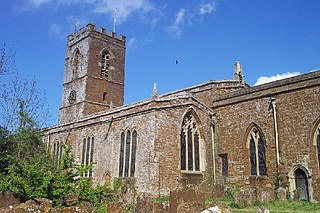
Swalcliffe is a village and civil parish about 5 miles (8 km) west of Banbury in Oxfordshire. The parish is about 2+1⁄2 miles (4 km) long north–south and about 1 mile (1.6 km) east–west. The 2011 Census recorded the population of the modern Swalcliffe parish as 210. The toponym "Swalcliffe" comes from the Old English swealwe and clif, meaning a slope or cliff frequented by swallows. The ancient parish of Swalcliffe was larger than the present civil parish, and included the townships of Epwell, Shutford, Sibford Ferris and Sibford Gower.

The General Artemas Ward House is a historic house at 786 Main Street in Shrewsbury, Massachusetts. Commonly known as the "Artemas Ward House", it was the lifelong home of Artemas Ward, American Major General in the American Revolutionary War and a Congressman from Massachusetts. The house is listed on the National Register of Historic Places.
Centennial Hall may refer to:

A bishop's storehouse in the Church of Jesus Christ of Latter-day Saints usually refers to a commodity resource center that is used by bishops of the church to provide goods to needy individuals. The storehouses stock basic foods and essential household items. The term can also be used figuratively to refer to all of the time, talents, skills, materials, compassion, and financial means of the members of the church that are available to be applied in the service of the needy.

The Lakeview Tithing Office, also known as the Bunnell Creamery, is a historic building located in Provo, Utah, United States. It is listed on the National Register of Historic Places.

The Pine Valley Chapel and Tithing Office, the chapel sometimes being referred to as the Pine Valley Ward Chapel, are historic 19th-century buildings of the Church of Jesus Christ of Latter-day Saints in Pine Valley, Washington County, Utah, that are jointly listed on the National Register of Historic Places.
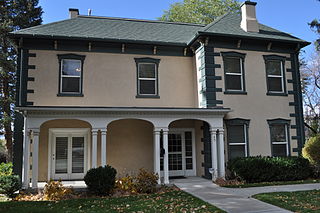
The Beers House–Hotel on N. 100 East in Pleasant Grove, Utah is listed on the National Register of Historic Places (NRHP). It was built in Italianate style of large, adobe bricks in 1885 and was renovated in 1930 with addition of stucco and quoins. In 1885 it was a work of mason Thomas Featherstone of Lehi with interior and exterior woodwork by E.J. Ward of Pleasant Grove and his two sons. Renovations in 1930 were done under supervision of Provo, Utah architect Fred Markham. It was renovated again in 1993. It was listed on the NRHP in 1994.

The Dr. Elmo and Rhea Eddington House is a historic house located in Lehi, Utah.
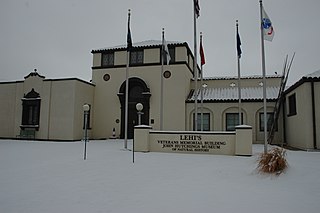
The Lehi City Hall at 51 N. Center St. in Lehi, Utah, known also as Old Lehi City Hall, was built during 1918–1926. It was designed by architects Walter E. Ware and Alberto O. Treganza of Salt Lake City and is of Mission/Spanish Revival style.

The Lehi Commercial and Savings Bank-Lehi Hospital was a historic building in Lehi, Utah, USA. Located at 206 E. State St. in Lehi, Utah, it was built in 1891 to serve the Lehi Commercial and Savings Bank, which has also been known as the Utah Banking Company. It was built by Charles Ohran, a local mason. The building was modified in 1925 to accommodate a hospital on the second floor, which expanded downstairs in 1929. It was renovated further in 1937.

The Lehi Main Street Historic District is a 5-acre (2.0 ha) historic district in Lehi, Utah, United States, listed on the National Register of Historic Places (NRHP).

The Lehi North Branch Meetinghouse, located at 1190 North 500 West in Lehi, Utah, was built in 1894 and was extended in 1917. It includes Gothic Revival and Classical Revival architecture. It has also been known as Lehi Third Ward Meetinghouse and as Zion's Hill Meetinghouse.

The People's Co-op Building at 151 E. State St. in Lehi, Utah was built during 1902–03. It was listed on the National Register of Historic Places in 1998. It has also been known as Niagara Skating Rink, Lehi Roller Skating Rink, Grass Furniture, and Christensen Wholesale.
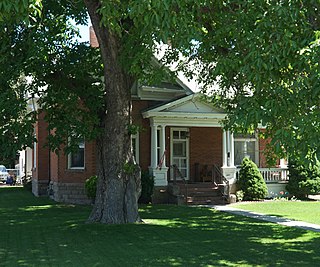
The Thomas and Mary Webb House, is a historic residence in Lehi, Utah, United States, that is listed on the National Register of Historic Places (NRHP).
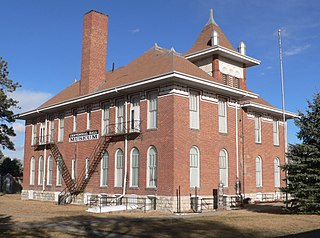
The Valentine Public School, at 3rd and Macomb Sts. in Valentine, Nebraska, was built in 1897. It has also been known as Centennial Hall.
The Flying Horseshoe Ranch was established in the Centennial Valley of southeastern Wyoming by Danish immigrant Mads Wolbol in the late 1870s. The complex of mostly log structures, about 15 of which are considered contributing structures.
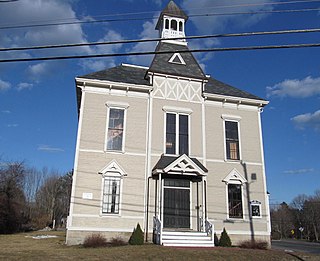
Centennial Hall is a historic community hall and schoolhouse at 105 Post Road in North Hampton, New Hampshire. Built in 1876, it is a distinctive local example of Stick Style architecture, and has served the town as a schoolhouse and community meeting place for most of its existence. It was listed on the National Register of Historic Places in 1980.

Eagar Townsite Historic District is a section of the town of Eagar, Arizona which has been designated a National Historic Place. Sitting on roughly 54 acres, the site contains 37 structures, 21 of which have historical significance. The period of significance is from 1886, the year the townsite was founded, through 1942, which represents the significant period of development of the town. The site was added to the Register on July 23, 1993.

Tithing buildings of The Church of Jesus Christ of Latter-day Saints are storehouses related to tithing by members of the Church of Jesus Christ of Latter-day Saints.




















